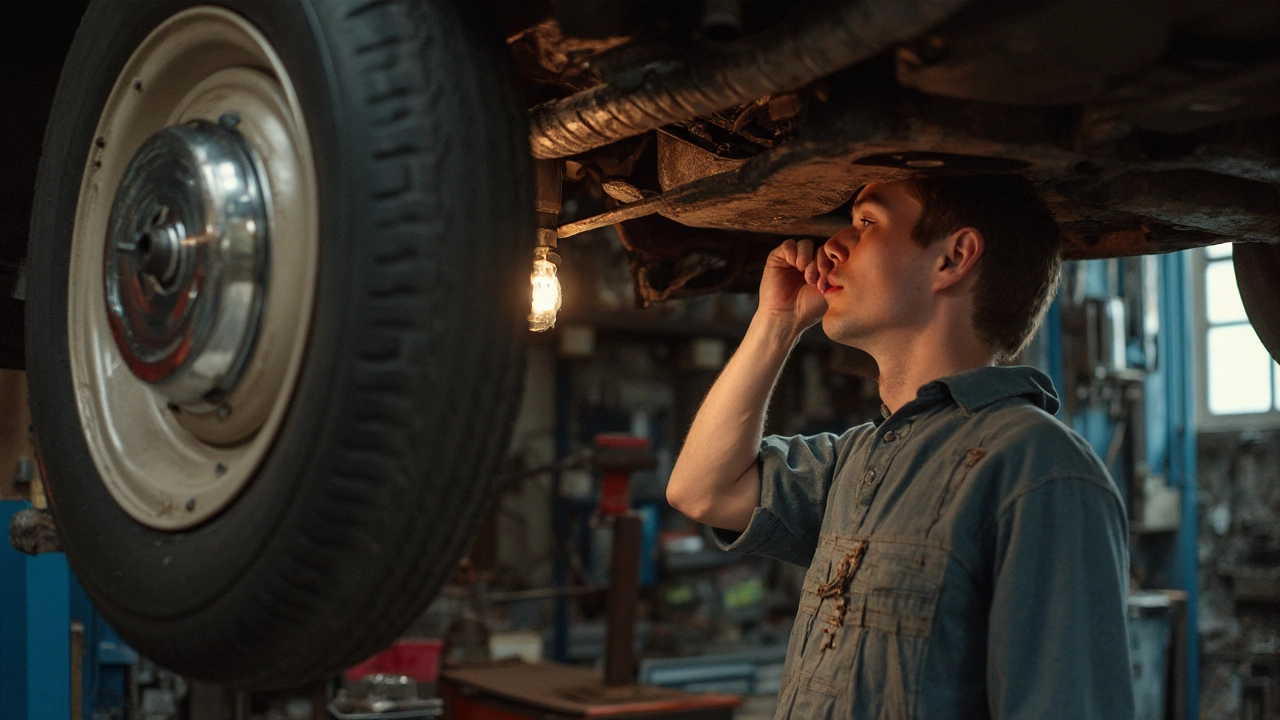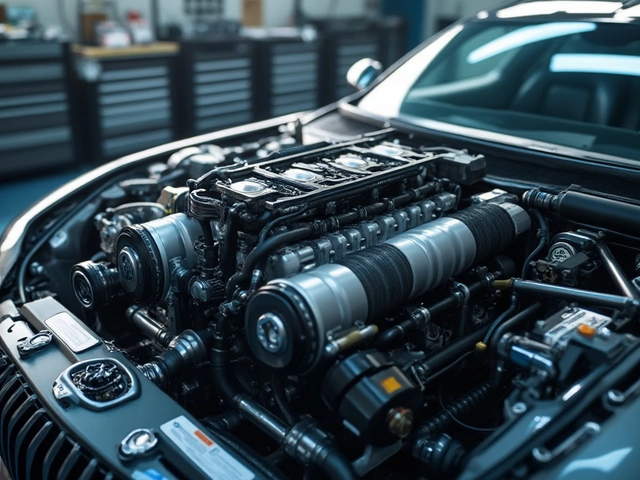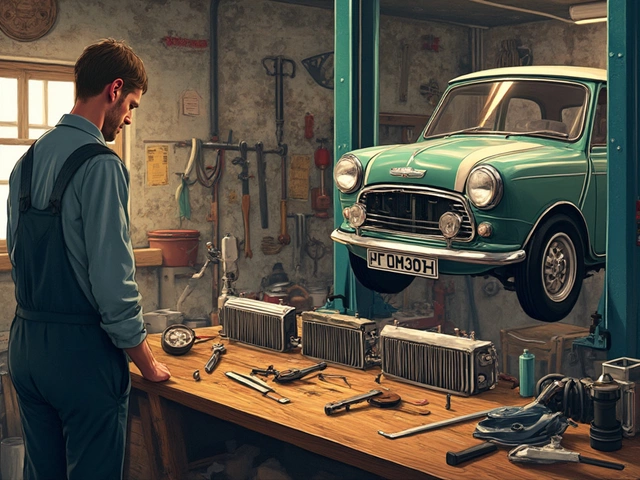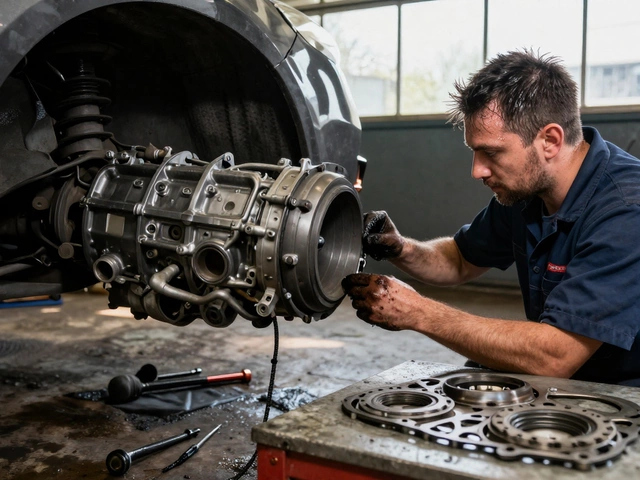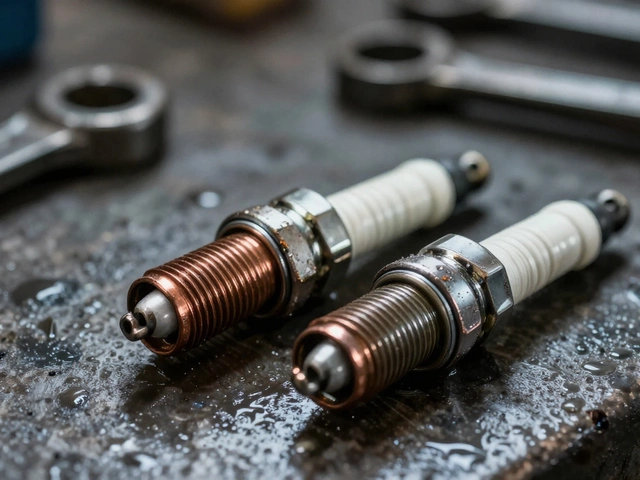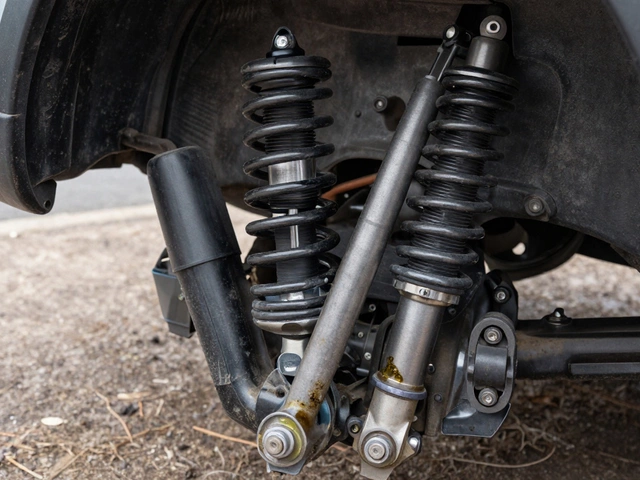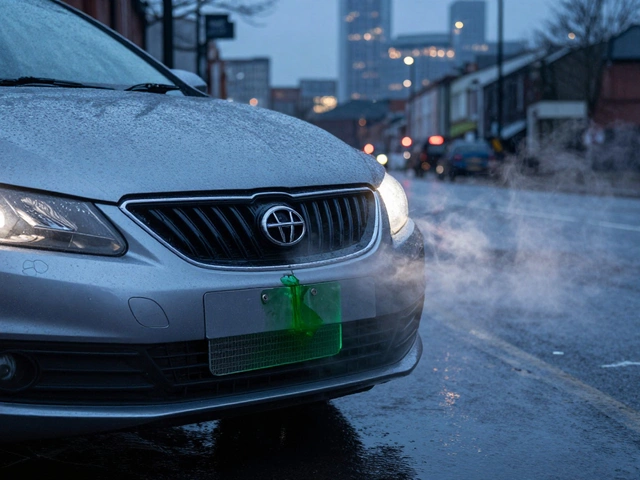So, you’re thinking about changing the clutch on your car, but then comes the age-old question: Do you need to replace the flywheel too? This won’t be a straight yes or no, but let’s break it down.
The flywheel is like the unsung hero in your car, playing a big role in making sure your ride is smooth by balancing the engine's function. When you're looking into replacing your clutch, it could be wise to check on this guy too. A worn-out flywheel might not pair too well with a shiny new clutch, leading to troublesome gear shifts down the road. Nobody wants that kind of drama, right?
But how do you know when to say goodbye to an old flywheel? One solid tip is to listen to your car. Literally. If there's a grinding noise when engaging gears, or your car vibrates like it’s doing a little dance, it’s time to pay attention. These signs might indicate that the flywheel needs a closer look—or even a replacement.
Now, inspecting the flywheel isn’t rocket science, but might take a bit of know-how. Checking for heat spots, grooves, or a blueish tint shows signs of trouble. Also, if there are visible cracks, it's definitely time to think about a new one.
- Understanding the Flywheel
- Signs Your Flywheel Needs a Replacement
- How to Inspect a Flywheel
- Cost Implications of Replacing the Flywheel
- Tips for Extending Your Clutch and Flywheel Life
Understanding the Flywheel
The flywheel might just be one of those car parts you never really hear about until it's causing problems. But trust me, it's key to keeping everything running smooth. Sitting between your engine and transmission, the flywheel's main job is to store energy. Think of it as a backup dancer, making sure the performance (your car's movement) stays fluid.
When you accelerate, the engine can have some hiccups in power delivery. The flywheel evens these out by storing excess kinetic energy and releasing it when needed. That’s why a good condition flywheel is crucial for smooth gear changes. No one wants jerky movements when shifting gears, right?
Besides, the flywheel also helps in starting the engine. It works with the starter motor to get those pistons moving. Imagine turning the key in your ignition and hearing nothing. Yup, a poorly performing flywheel can cause that too.
A little fun fact: The flywheel also acts as a balance wheel, reducing vibrations. When it’s in good shape, it stops your car from feeling like a vibrating chair. So, all the more reason to ensure it’s looked after!
If you’re thinking about inspecting your flywheel, check for symptoms like weird noises or strange gear behavior. Believe it or not, replacing the flywheel during a clutch replacement isn't all that uncommon. Mechanics often recommend it, especially if you’re clocking up the miles or if you often drive under challenging conditions.
Overall, understanding what your flywheel does can save you from future headaches. It might not be as eye-catching as a new car stereo or alloy wheels, but its impact on your vehicle's performance is immense.
Signs Your Flywheel Needs a Replacement
Now, figuring out if your flywheel is on its last legs can sometimes save you from future headaches. Believe me, paying attention to a few obvious signs is totally worth it.
First off, your ears can be your best tool. If you hear a grinding noise when you try to shift gears, it's not just the car complaining—it's a red flag. This could point to a worn-out flywheel that might not be engaging properly with the clutch.
Next up, let's talk about vibrations. If your ride feels more like a shaky carnival ride when you're shifting, it's another sign that your flywheel might need attention. These vibrations can happen when the surface of the flywheel has worn unevenly.
Another telltale sign of a worn flywheel is a slipping clutch. You know, when you press the clutch pedal, but it feels like the car doesn’t want to move? Before blaming the clutch itself, consider checking the flywheel’s condition. Worn-out flywheels can cause this frustrating slippage since they fail to grip as they should.
Do a visual check if you can. Look for discolored spots or grooves, which are signs of overheating. A flywheel that has taken too much heat might also have tiny hairline cracks. So, give your trusty flashlight a go when the gearbox is opened up.
As some general advice, if the odometer shows a big number of miles and you're unsure when the clutch was last replaced, it's safer to consider replacing the flywheel along with the clutch kit.
- Grinding noises while shifting gears
- Excessive vibrations during shifts
- Clutch slippage
- Visible heat spots, grooves, or cracks on the flywheel
If you catch these signs early, you can avoid bigger repairs down the line. Stay aware of these clues, and your car's transmission will definitely thank you!
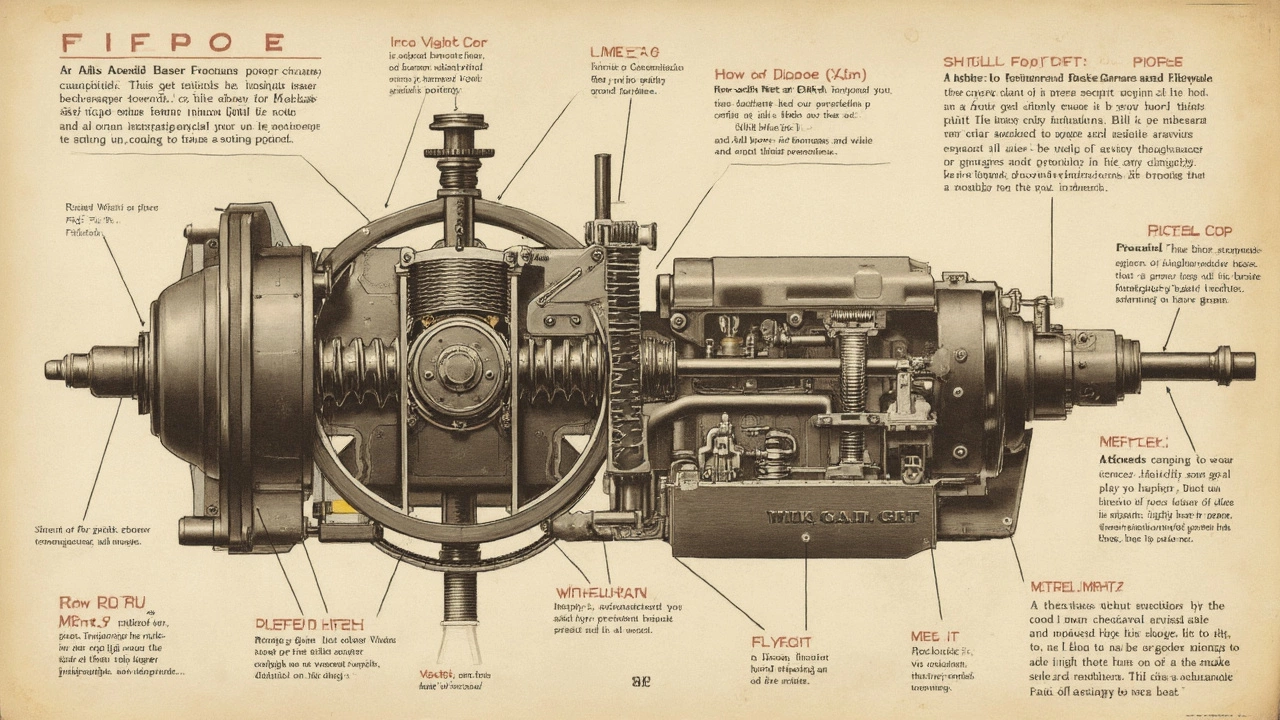
How to Inspect a Flywheel
When it comes to giving your car's flywheel a once-over, knowing what to look for can save you from unexpected car troubles. First things first, you need access. With your vehicle safely elevated, and after removing the clutch, the flywheel should be right in front of you.
Here's a step-by-step guide to ensure you're doing it right:
- Visual Inspection: Get a clear view of the surface. Look for obvious issues like cracks or heavy scoring, which are red flags.
- Check for Heat Spots: Heat spots appear as dark patches. Their presence might indicate the flywheel got too hot, likely due to clutch slippage or excessive friction.
- Surface Quality: Run your fingers across for grooves or rough patches. A smooth but not slick surface is what you're aiming for. Slick means it's been worn down.
- Assess Warping: Use a straight edge ruler to check for warping. Place it across the flywheel; if light shines through any gaps, there's a warp issue.
- Flywheel Teeth: Look at the ring gear teeth. Damaged or missing teeth won't engage properly with the starter motor, meaning a no-start condition.
Don't ignore these signs! Each of them can lead to a bad time when you're trying to drive. Plus, fixing it later will likely cost more than doing it now while everything's already apart.
Some folks even decide to measure the flywheel's runout using a dial indicator to see just how flat it is after mileage. It might feel technical, but it's a worthy step if you have a bit of experience.
In sum, flywheel issues don't resolve themselves. A solid inspection, paired with replacing items over choosing short-term fixes, will keep your journey smooth. Plus, engaging in maintenance now prevents bigger headaches later on.
Cost Implications of Replacing the Flywheel
Alright, let's get to the nitty-gritty – how much is it going to cost you to replace that flywheel? It's not exactly pocket change, that’s for sure. When considering the cost, you're looking at two main components: the price of the flywheel itself and the labor charges for getting it installed.
First off, the price of a new flywheel can vary a lot. On average, you're probably looking at around $100 to $500, depending on the make and model of your car. Some high-performance vehicles might even set you back more than $1,000 just for the part. But for most everyday cars, you'll typically fall somewhere in that average range.
Then there’s the labor cost. Since accessing the flywheel involves removing parts like the transmission, it’s pretty labor-intensive. On average, labor could range from $200 to $500. But let’s not forget, this varies based on where you live and the shop's rates, so it’s always a good idea to shop around a bit.
So, added up, the whole process can easily hit the $600 to $1,500 mark by the time you're done. Of course, if you’re the handy type and got the tools, doing it yourself could save a load of cash.
Now, here’s something to chew on: sometimes replacing the clutch and flywheel together can save on labor costs, since they’ve already opened up the car. So if your wallet can stretch a bit, it might be worth tackling both at once.
Here’s a quick look at these costs in summary:
| Item | Typical Cost Range |
|---|---|
| New Flywheel | $100 - $500+ |
| Labor | $200 - $500 |
| Total (Parts + Labor) | $600 - $1,500 |

Tips for Extending Your Clutch and Flywheel Life
Want to keep that clutch and flywheel running smoothly? It's all about being mindful of how you're driving. Let’s dig into some simple habits that can make a big difference.
1. Avoid Riding the Clutch. One of the easiest ways to shorten your clutch's life is by riding it. This means keeping your foot pressed down partially when it’s not necessary. Get into the habit of easing your foot off when shifting gears.
2. Use the Handbrake on Hills. Instead of balancing the car on the clutch when stopped on a hill, use the handbrake. This lessens the load on the clutch and saves your flywheel from extra stress.
3. Shift Smoothly and Timely. Smooth and timely gear shifts help reduce wear and tear. Don’t rush or linger—shift gears at the right moment to maintain a good balance.
4. Regular Inspections. Don’t wait for something to go wrong before you pop the hood. Regular check-ups can spot wear on your flywheel early, letting you take action before it leads to bigger issues.
- Inspect Flywheel Surface: Check for discoloration or grooves.
- Check for Leaks: Oil leaks can make a mess of the clutch and flywheel, so stay vigilant.
5. Keep an Eye on Maintenance Costs. It might be helpful to track how much maintaining these parts costs over time. Noticing an increase could be a sign it’s time for a professional check-up. Speaking of which, here's a quick look at typical costs you might expect per type of service:
| Service Type | Approximate Cost |
|---|---|
| Clutch Adjustment | $75 - $150 |
| Flywheel Resurfacing | $30 - $50 |
| Full Clutch Replacement | $400 - $700 |
Taking these steps can help keep your car in top shape and save you time and money in the long run. Remember, treating your car parts gently means they are more likely to return the favor!
